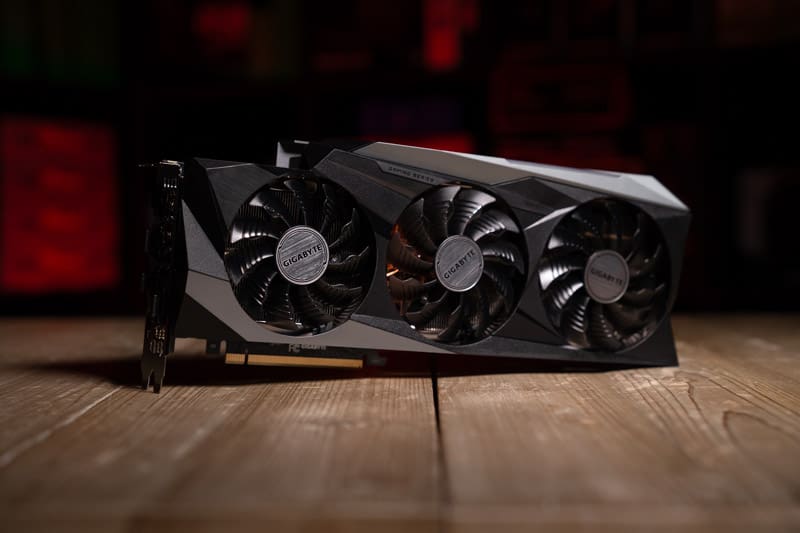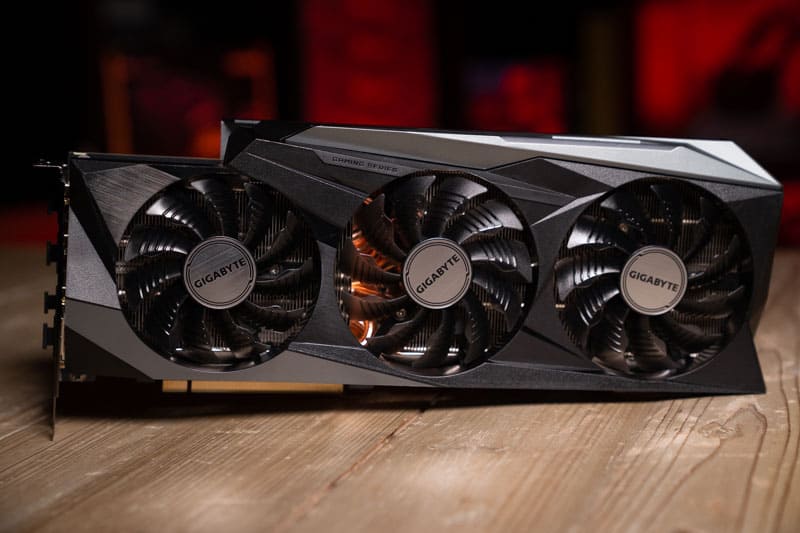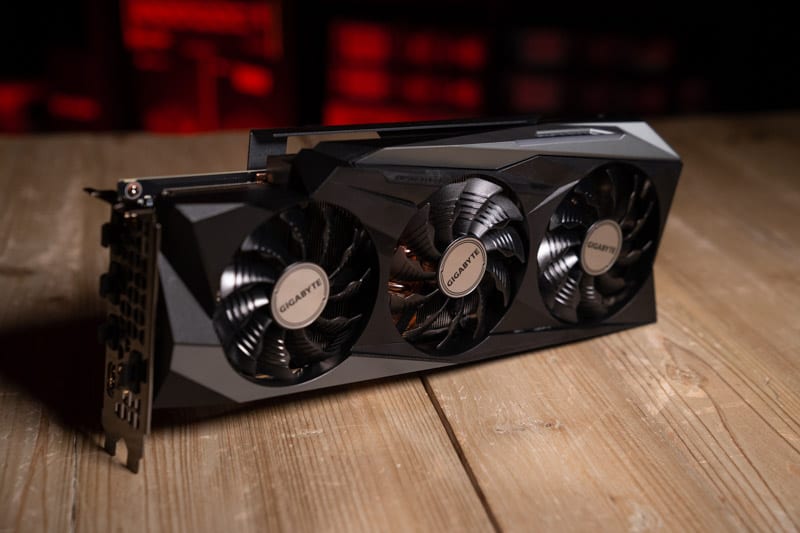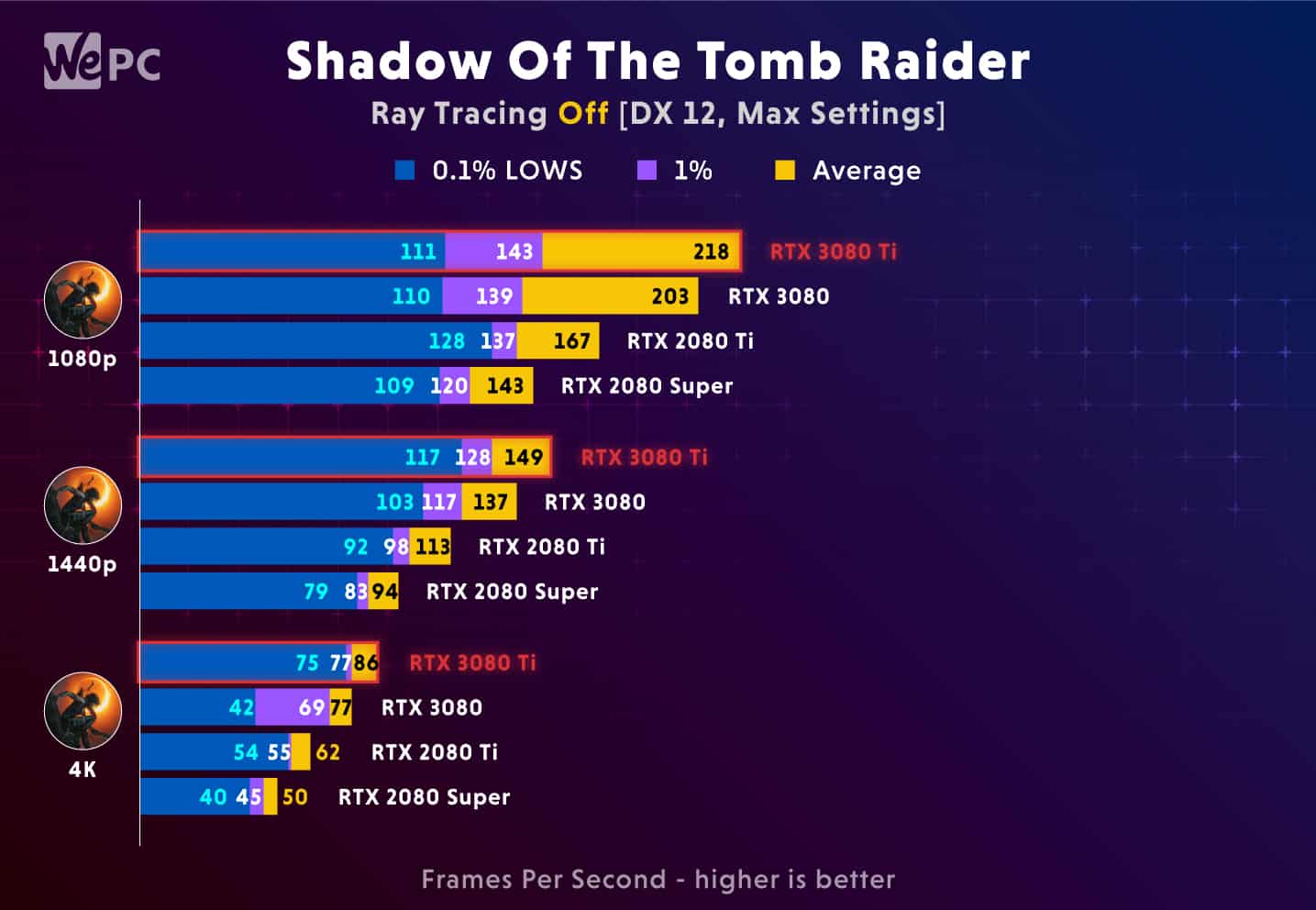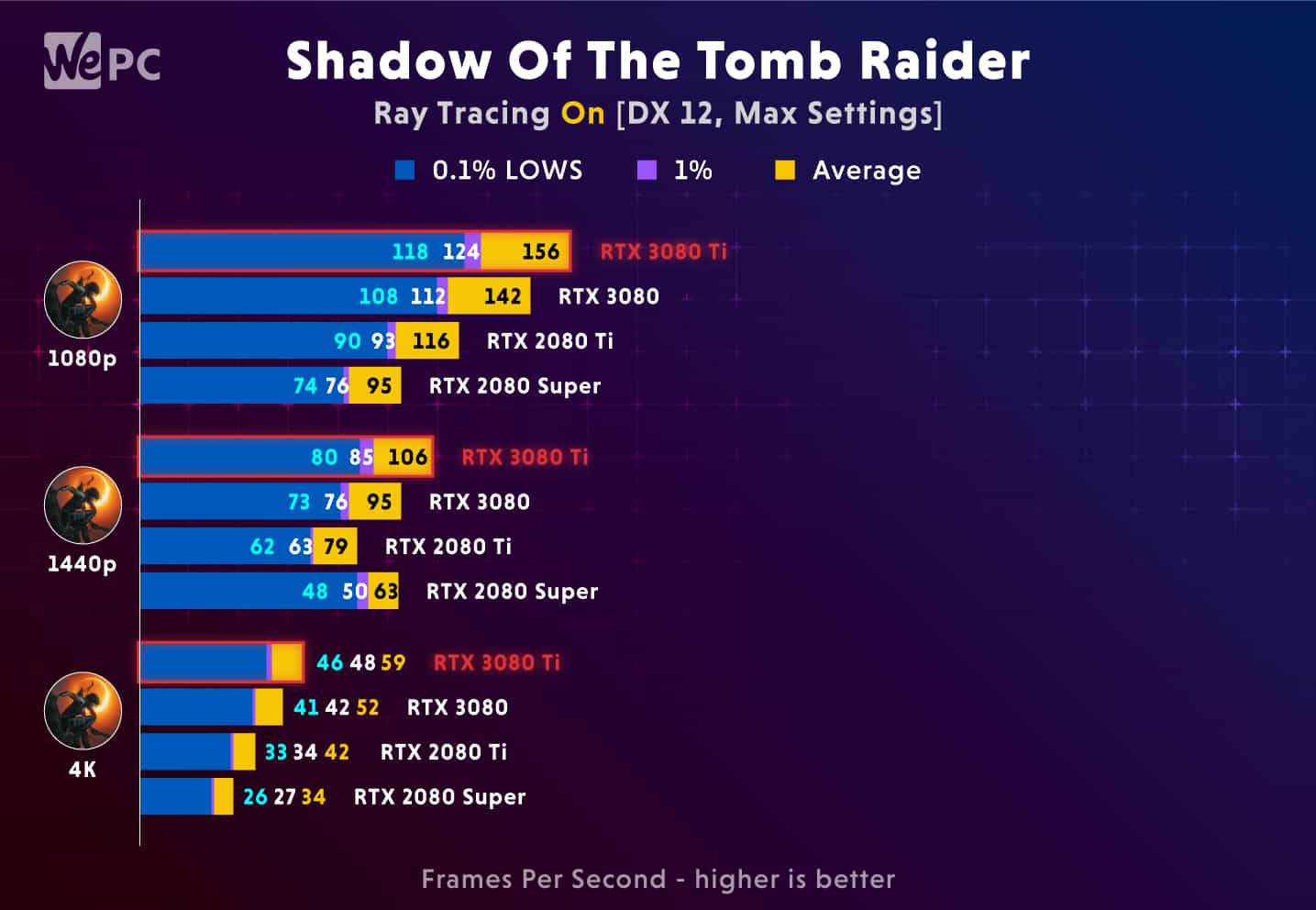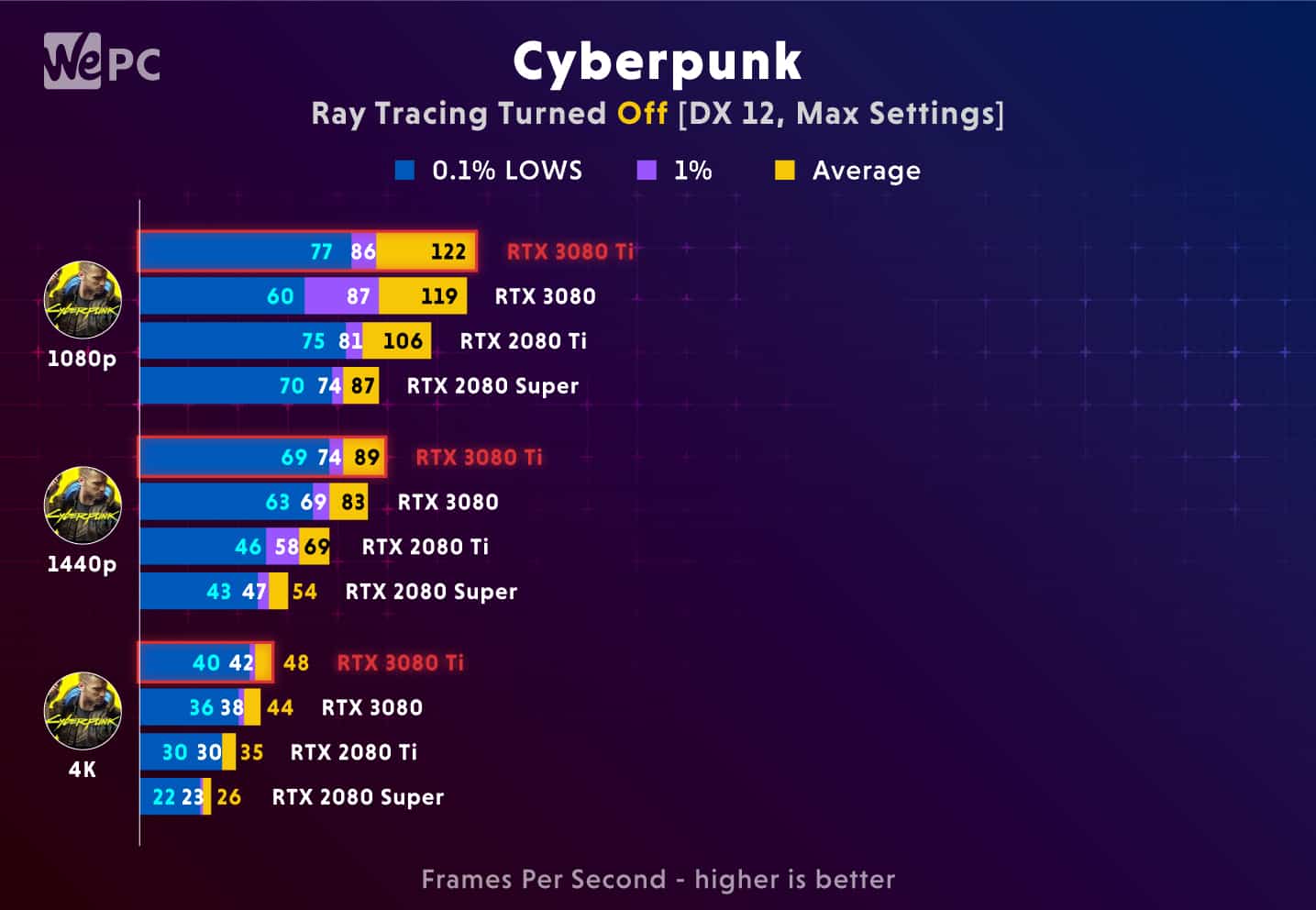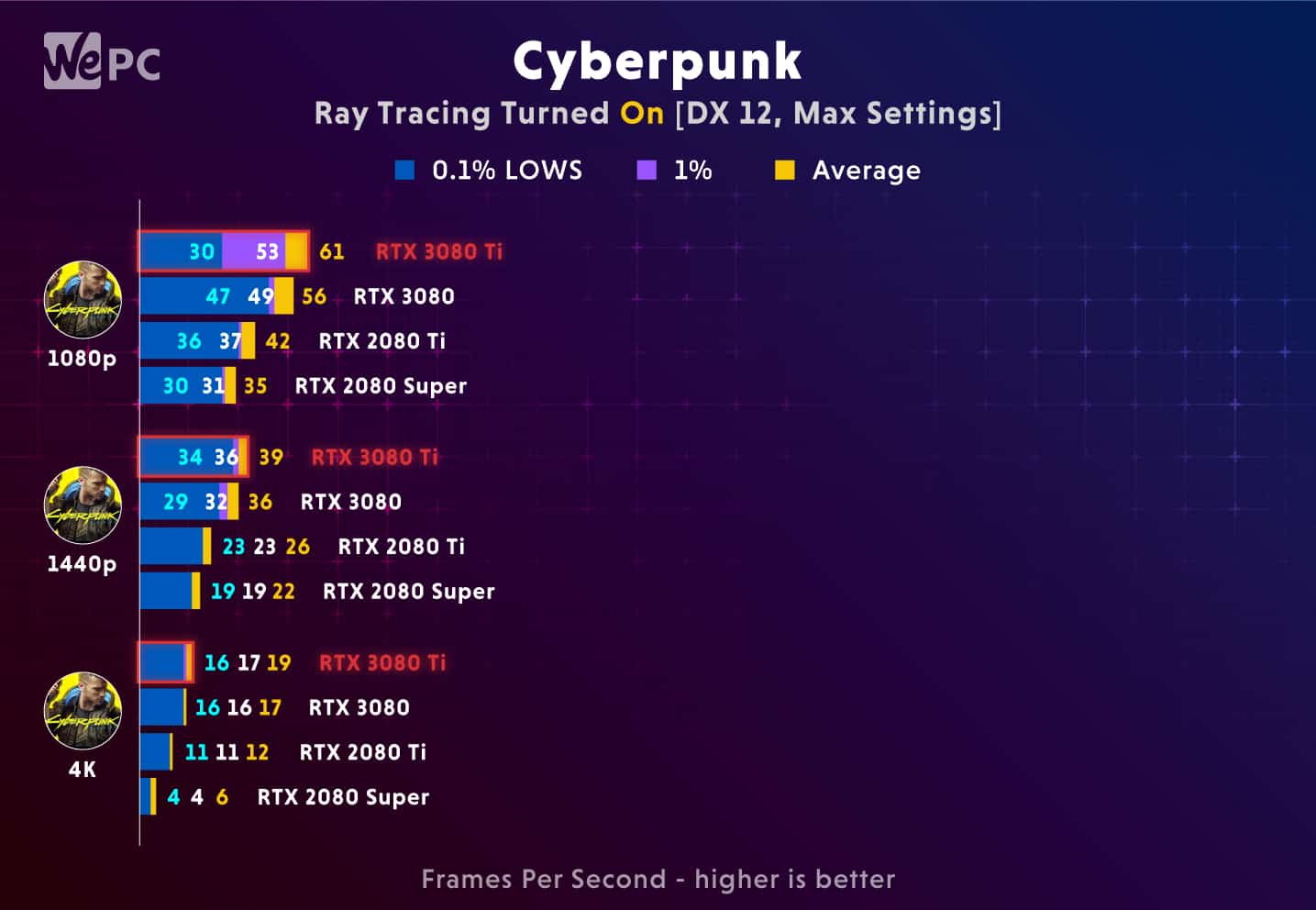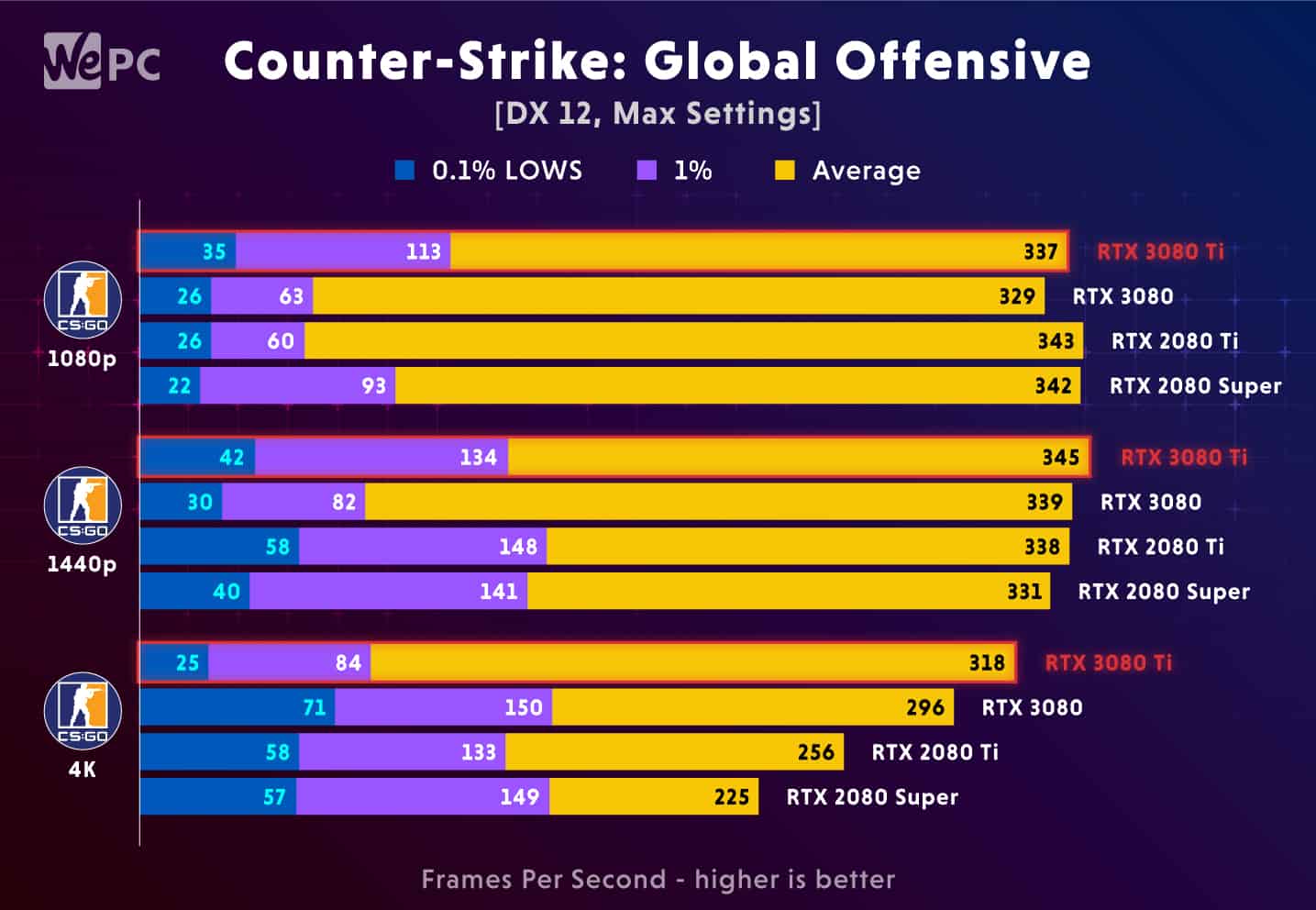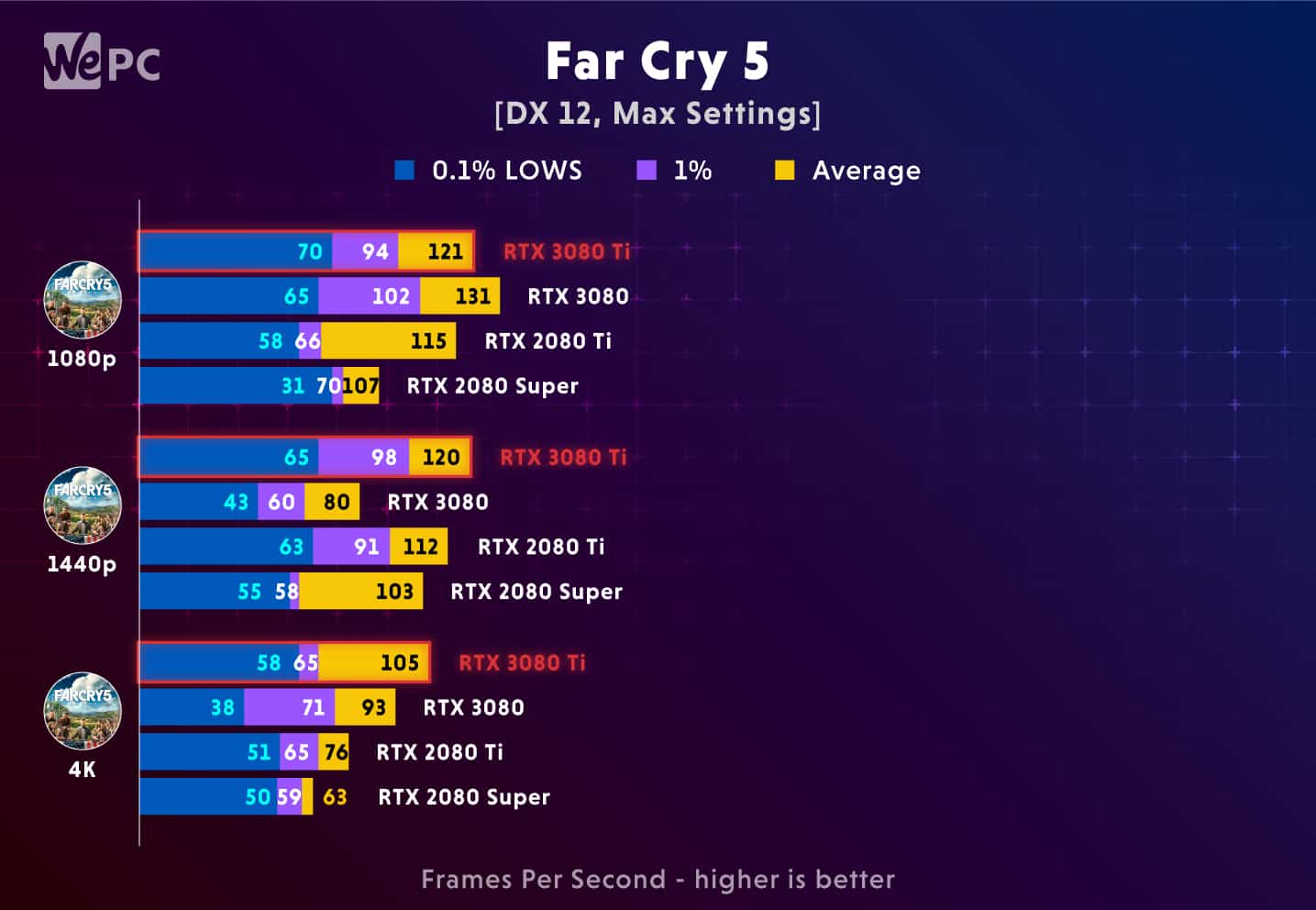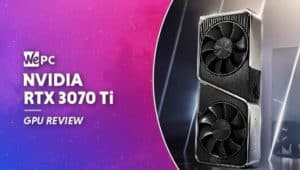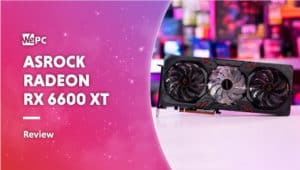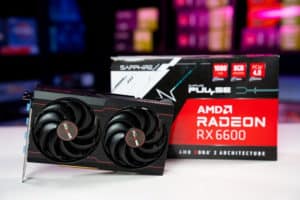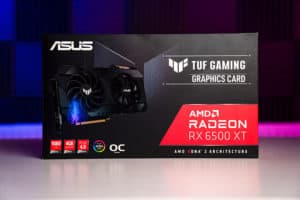Gigabyte RTX 3080 Ti Gaming OC 12G Review
We Review And Benchmark The RTX 3080 Ti AIB From Gigabyte And Ask If It's Worth The Money
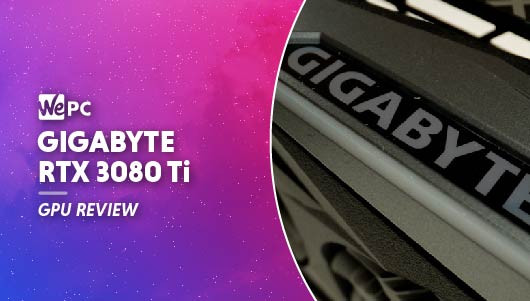
The much-awaited release of the RTX 3080 Ti is finally here! This card is Nvidia’s new flagship gaming GPU – bridging the gap between the RTX 3080 and the RTX 3090 in terms of price, the latter card being focused primarily on workstation users rather than gamers.
The version of the card we will be reviewing today is not the vanilla Founder’s Edition, but the souped-up AIB from Gigabyte, which should mean slightly better performance than you’d get from the FE version.
Gigabyte are a well-known brand when it comes to providing AIBs of all the latest graphics cards, typically ones that offer higher gaming performance than their Founder’s Edition counterparts, at the tradeoff of being they’re considerably bulkier, not to mention about $200+ pricier.
Gigabyte RTX 3080 Ti Specifications And Price
- Moderate out-the-box overclock
- Quiet thermal design
- Greater expected lifespan vs FE
- 2x HDMI ports
- 4 Years warranty
- Good build quality
- Moderately expensive compared to other RTX 3080 Ti AIBs
- The RTX 3080 Ti is a prohibitively expensive GPU
- Large size vs Founder’s Edition
- Less aesthetically pleasing than the Founder’s Edition
- Would have liked to have seen a higher overclock
Like the vanilla version of the card, the Gigabyte RTX 3080 Ti comes with 12GB of VRAM: two more than the RTX 3080 but half as many as the mighty 24GB VRAM RTX 3090. Ultimately this reduction from the RTX 3090 reflects the fact that the RTX 3080 Ti is a gaming-focused GPU, rather than one intended for heavy workstation loads like its more expensive sibling – similar levels of VRAM would not be utilized during gaming and this is therefore an area in which savings can be made on the cost of the card. The memory bus however is the same as that of the RTX 3090 in both the Founder’s Edition and this Gigabyte variant i.e. 384-bit, which means that the GPU can maximize the usage of the VRAM it has.
The CUDA core count for all versions of the RTX 3080 Ti is 10,240 (if this number was different you’d essentially be using a completely different graphics card!). As expected, the main changes that Gigabyte brings to their variant of the card is the 1710 MHz clock speed and the 19000 MHz VRAM speed, which are higher than the base model, which comes with a core clock of 1665 MHz and a memory speed of only 1188 MHz.
Higher clock speeds mean a greater requirement for cooling, which we will discuss in more detail below. The main obvious difference in this area though is that the Gigabyte card has three fans rather than two, which also makes the card substantially longer than the Founder’s Edition.
Thankfully the TDP of this Gigabyte AIB and system power it requires remains the same as with the Founder’s Edition of the RTX 3080 Ti – the same 750W PSU will do the job for both.
Gigabyte RTX 3080 Ti Aesthetics
The Founder’s Edition of the RTX 3080 Ti essentially looks like the RTX 3080 with two extra letters slapped on: greyish gun metal in color with a sort of horizontal hourglass detail. Not exactly gorgeous but quite understated and elegant.
This Gigabyte RTX 3080 Ti however looks very similar to the preceding generation AIB from the company: black and grey for the most part, with the copper plate and piping peaking through. As mentioned the Gigabyte AIB is a larger beast than the vanilla version thanks to its three fans, which are all visible on the top of the card and make it look a bit more functional than the Founder’s Edition.
This Gigabyte RTX 3080 Ti however looks very similar to the preceding generation AIB from the company: black and grey for the most part, with the copper plate and piping peaking through. As mentioned the Gigabyte AIB is a larger beast than the vanilla version thanks to its three fans. There is a single RGB strip which lights up the logo on one side of the card which can be synchronized with other AORUS devices as part of the company’s RGB Fusion 2.0 technology, with a multitude of colors and various effects to choose from, however ultimately the size of the strip this affects is relatively limited. Although Gigabyte have upped their game since their 1080 Ti days (most definitely not the best looking of cards), the aesthetics of this brand aren’t really their strong suit and we’d describe them as fairly average.
Gigabyte RTX 3080 Ti Cooling
One of the biggest sources of concern for the RTX 3080 Ti was the cooling. The Founder’s Edition of the RTX 3080 Ti has the same 350W TDP as the RTX 3090, but rather than the triple slot fan cooling system that the more expensive card has, the 3080 Ti comes with a twin fan setup – putting more strain on the fans and increasing the audible noise produced.
As you would expect this Gigabyte AIB comes with a more powerful cooling solution to support its overclocked frequencies: it has three uniquely designed fans that are able to alternate spinning and screen cooling, and the extended heatsink gives improved airflow and therefore heat dissipation. The pure copper plate and piping also allow for improved heat conduction and dissipation. The general audible noise is noticeably quieter, though we wouldn’t say by a massive margin. Still, every little helps!
Gigabyte RTX 3080 Ti Performance
Above you can see the benchmarking results we have so far on the RTX 3080 Ti compared to the other relevant entries in the GeForce range, and this should be all the information you need to know when making a decision as to whether to buy this pricey card (assuming you can find one).
Our overall impression is that the RTX 3080 Ti (unsurprisingly) performs best compared to the competition at 4K resolution and with Ray Tracing turned on: the biggest difference over the RTX 3080 being on Shadow Of The Tomb Raider (a 14% FPS increase) and Cyberpunk 2077 (a 12% FPS increase) at these presets. At 1080p with Ray Tracing turned off, the difference in performance compared to the RTX 3080 was as low as 7% and 3% respectively – not worth an additional $500+ I think you’ll agree!
The lowest difference in performance was with Counter-Strike: Global Offensive, showing a 2% uplift in FPS for the RTX 3080 Ti over the RTX 3080 at 1080p and 7% at 4K. Again, given the comparative age of the game this is perhaps unsurprising.
Far Cry 5 showed some anomalous results, with the RTX 3080 actually outperforming the Ti version by 8% at 1080p but was absolutely destroyed at 1440p by the newer card, which showed 50% improved FPS. Both of these results can be explained by the occasional tendency of both graphics cards to effectively throttle their own output when they shouldn’t: in layman’s terms, the 30 series cards have an architecture which aims to be more power-efficient than the 20 series and actively consume less power when they think it isn’t needed, reducing the usage/output of the GPU. Whilst a welcome concept, this can sometimes occur mid-game if the graphics card isn’t optimized correctly with a specific game. For the 3080 Ti in particular, recently released as it is, it is likely that future drivers will iron out some of these anomalies on various games, hopefully including on Far Cry 5! At 4K both GPUs behaved as expected however, with the RTX 3080 Ti showing 13% improved performance over the RTX 3080.
As you can see in the above benchmarking, the 3080 Ti is indeed a ridiculously powerful graphics card, and certainly takes the title of best gaming GPU from a purely power-based perspective. Although not visible in the above graphs, the card closely rivals and often beats the RTX 3090 in FPS performance, despite costing $300 less, which just goes to show that the loss of that 12GB VRAM is relatively meaningless when it comes to gaming.
However, the big question here is whether the increase in performance is worth it for what is a $1,199 MSRP card for the Founder’s Edition or around $200 more for the Gigabyte AIB (if you’re lucky enough to find either at this price, which is doubtful given the current market). Remember that the Founder’s Edition of the RTX 3080 had an MSRP of $699 before the great silicon shortage sent the market crazy, which essentially means you’re paying over 71% more for a graphics card that only performs 14% better at best in the tests we’ve done at 4K, and often substantially below this.
Final Word
Ultimately, in our humble opinion, the Nvidia RTX 3080 Ti just isn’t worth the money for the relatively small performance increase you get over cards like the RTX 3080 and AMD’s 6800XT.
The RTX 3080 Ti is certainly a powerful card, and compares favorably well to the Nvidia RTX 3090, costing less than the 24GB VRAM behemoth, despite having many of the same features besides this, but this isn’t really that useful a comparison – the 3090 is a workstation rig, for when maximum VRAM is essential. The RTX 3080 Ti is supposed to be a flagship gaming GPU, and although it wins out in raw power, it just does not match the price/performance of the $699 MSRP RTX 3080 (even though you’d be lucky to find one at that price). We’d say it’s only really worth buying this card if you have ample money to burn, and absolutely have to have the best of the best in your rig, but that won’t apply to 99% of the people reading this article.
If you do decide to pick up a RTX 3080 Ti though, the question is whether or not you should go with the 3080 Ti Founder’s Edition or an AIB like the Gigabyte RTX 3080 Ti Gaming OC 12G? Ultimately, if you prioritize cooling and noise levels over aesthetics then the extra money you’ll pay is a relative drop in the ocean for such an expensive card, and we think the longevity you’ll likely to get out of the more advanced cooling solution certainly makes it worth it, not to mention the extra FPS you’ll squeeze out of it. The only real downsides to the Gigabyte RTX 3080 Ti Gaming OC 12G are aesthetic (in our opinion the Gigabyte version doesn’t look as sleep as the FE model) and also size: the three fans and expanded heat sink of the Gigabyte version really do bulk it out and the card won’t fit in smaller cases.
Keep refreshing our Where To Buy The RTX 3080 Ti page for the best chance of picking up one of these elusive graphics cards. Please tell us what you think about the new GPU in the comments section below and check out our other related articles for more in-depth reviews.
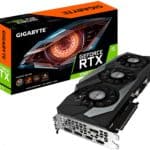
WePC is reader-supported. When you buy through links on our site, we may earn an affiliate commission. Prices subject to change. Learn more

